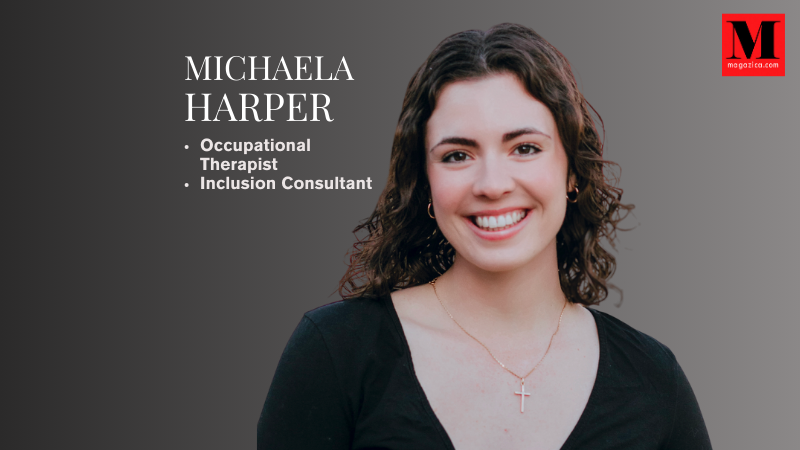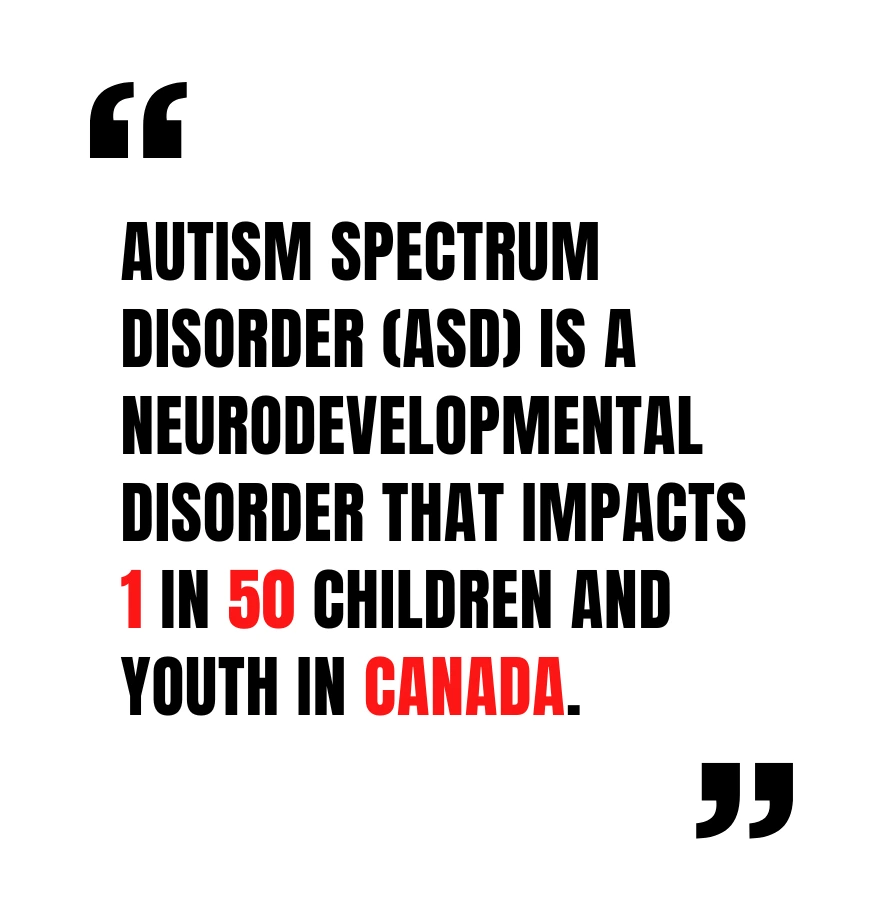Beyond Meltdowns: Understanding Sensory Sensitivities and How Occupational Therapy Can Help Children with Autism Navigate the World
- Home
- Beyond Meltdowns: Understanding Sensory Sensitivities and How Occupational Therapy Can Help Children with Autism Navigate the World

Beyond Meltdowns: Understanding Sensory Sensitivities and How Occupational Therapy Can Help Children with Autism Navigate the World
Autism Spectrum Disorder (ASD) is a neurodevelopmental disorder that impacts 1 in 50 children and youth in Canada. As awareness about ASD and advocacy for autistic individuals is increasing, spearheaded by the autistic community itself, it is important to continue to educate ourselves so we can understand more about supporting the autistic individuals in our communities. The topic of this article, sensory processing differences, is a defining characteristic of ASD that is often misunderstood. If we can better understand sensory processing, we can better understand autistic people and better modify our world to be a more inclusive and safer place for everyone. In this article, I hope to shed some light on sensory processing and how occupational therapy can assist autistic children to develop strategies to navigate sensory processing differences, drawing on my experience and education as a neurotypical occupational therapist working primarily with autistic children.
Often, autistic children have differences in the way that their body and brain interpret sensory signals from the world around them. This can include being overly responsive to sensory input and being less responsive to sensory input. This might look like sensitivity to noise (auditory sensory processing differences) or bright lights (visual sensory processing differences), avoidance of fast or rotational movements (vestibular sensory processing differences), or bumping/falling into things or having poor spatial awareness (proprioceptive sensory processing differences). These examples are just a small window into how sensory processing differences may be expressed. Sensory processing is different for every autistic person and can impact every autistic person differently.
Now I want you to take a moment and try to imagine that the world around you is too loud or too bright, or things are moving past you too fast for your sensory system to take in and process. The cars driving by are making you dizzy, the sounds of birds chirping are giving you a headache, and the sun is so bright you must squint your eyes to see. At the beginning of the day, you have the energy to deal with these uncomfortable feelings. But as the day goes on and the world around you become more and more overwhelming, you lose your ability to tolerate these feelings. Maybe you begin to be more frustrated with the people around you, maybe you cry more easily, maybe you don’t want to engage in your favourite activity and instead you just want to sit in a dark room and watch TV. You are emotionally and physically exhausted and all you can think about is that you are going to have to do it all again tomorrow. This sounds really hard, right? This is a small glimpse into what some autistic people feel every day. Sensory differences can make it difficult to process and make sense of the world and this can lead to experiences such as anxiety, avoidance of certain places or stimuli, shutdown, or meltdown. These experiences are a completely normal reaction to the feelings of overwhelm and overstimulation that sensory differences can elicit. All of these reactions are ways of communicating that can be used to better understand barriers to engagement and to assist autistic people with modifying the environment or working to integrate sensory systems in order to make sensory processing easier and therefore make the world easier to live in.
When it comes to modifying the environment and assisting autistic individuals with sensory integration, occupational therapists (OTs) are uniquely positioned and trained to attend to these challenges. OTs work with individuals of all ages and diagnoses to be able to engage in meaningful activities related to productivity (like school, volunteering, or work), leisure (like engaging in sports, creative hobbies, or spending time with friends), and self-care (like getting dressed, brushing your teeth, and sleeping well). The scope of occupational therapy is very broad and therefore OTs are uniquely situated to be able to improve function and modify a task or the environment to better suit an individual’s needs, and therefore help break down barriers to engagement in productivity, self-care, or leisure. With autistic children, OTs often assist with sensory integration, emotional regulation, environmental modification, or task modification with goals like increased social engagement, independence in self-care tasks like getting dressed, improvement in fine motor skills like printing at school, and greater ability to regulate one’s emotions.

With regards to sensory processing differences, OTs assess these differences using play-based assessments, observations, parent interviews, and standardized assessments to better understand a child’s sensory needs. Then, OTs can work with children to integrate these sensory systems through motivating activities that can be play-based, in order to more easily engage with the world, or modify the environment or task to better manage sensory information. Every autistic child is so different, and so it is beneficial for each assessment and intervention to be suited to a child’s needs, likes/dislikes, and personality.
For sensory integration, OTs often use swings or other toys to incorporate vestibular and proprioceptive input into a child’s repertoire. Over time, these sensory systems become better integrated with more efficient communication between a child’s body and brain. Then, when the body feels vestibular or proprioceptive input in day-to-day life, it is better able to sort through this sensory information and process it. Over time, OTs work with clients and families to create a customized repertoire of activities that provide and regulate sensory input that children can do in their home or school environments. These activities can assist children with sensory integration (for example, laying on a yoga ball and gently rocking back and forth to provide proprioceptive and vestibular input) and can therefore meet a sensory need. This improvement in sensing the outside world also leads to an improved sense of interoception, or the ability to sense what is going on inside one’s body. Increased interoception also means an increased ability to sense and understand one’s emotions. With an increased ability to make sense of one’s emotions, one’s body, and the outside world, this can lead to increased regulation.
Other common modification-based interventions include sound-dampening headphones for auditory input, tinted glasses and dimmed lights for visual input, or weighted blankets for proprioceptive input. These modifications assist with adapting the environment and/or task to be more tolerable for autistic individuals, so they can more easily engage with their environment or task.
These modification-based interventions can also lead to increased regulation, as processing and tolerating the world becomes less stressful. Increased ability to take in your surroundings and make sense of the world around you then leads to an increased ability to turn your focus inwards and make sense of what is going on inside your body. An increased ability to make sense of what is going on inside your body, your emotions, and your environment leads to increased regulation.
My hope is that this article allows readers to put themselves into the shoes of an autistic person and that they begin to understand sensory processing differences experienced by those in the autistic community. By increasing understanding and empathy, stigma and judgment around experiences like meltdown, shutdown, anxiety, and avoidance can be reduced. I challenge you to reflect on your community – is it friendly to those who have sensory processing differences? How can you modify your community to support those with ASD?
Understanding sensory processing differences is the key to helping autistic children engage with their environments and meaningful activities, or in other words, helping autistic children thrive. As an occupational therapist, I see how sensory processing can be the key to unlocking the world for autistic children. However, please do not just take my word for it! Please check out these wonderful autistic advocates and learn more about their experiences regarding sensory processing and how sensory differences impact how they engage with the world.
– Sensory Processing Through An Autistic Lens by Annie Kent, M.A.: https://autismspectrumnews.org/nurturing-comfort-sensory-processing-through-an-autistic-lens/
– Kent, A. (2024, January 10). Nurturing comfort: Sensory processing through an autistic lens. Autism Spectrum News. https://autismspectrumnews.org/nurturing-comfort-sensory-processing-through-a n-autistic-lens/
– Sensory Processing Differences Toolkit by Fakhri Shafai, Ph.D., M.Ed., Moira Peña, Occupational Therapist, and Elsbeth Dodman, B.A. and Autistic Self-advocate: https://aidecanada.ca/resources/learn/sensory-regulation/sensory-processing-differences-toolkit
– Shafai, F., Peña, M., Dodman, E. (2025). Sensory Processing Differences Toolkit. Aide Canada. https://aidecanada.ca/resources/learn/sensory-regulation/sensory-processing-differences-toolkit
– For more self-advocacy articles and to learn more! https://a4aontario.com/about/
- Share
Michaela Harper
Michaela Harper is a paediatric occupational therapist with Paediatric Physiotherapy Associates, where she sees clients at both Variety Village in east Toronto and the Abilities Centre in Whitby. She completed her Master’s in Occupational Therapy at the University of Toronto and contributed to research at Holland Bloorview’s NOVeL Lab, examining how concussion services adapted to virtual care during the pandemic. Before that, she completed her Bachelor’s of Science (Honours) in Kinesiology with a diploma in Disability and Physical Activity at Queen’s University.
